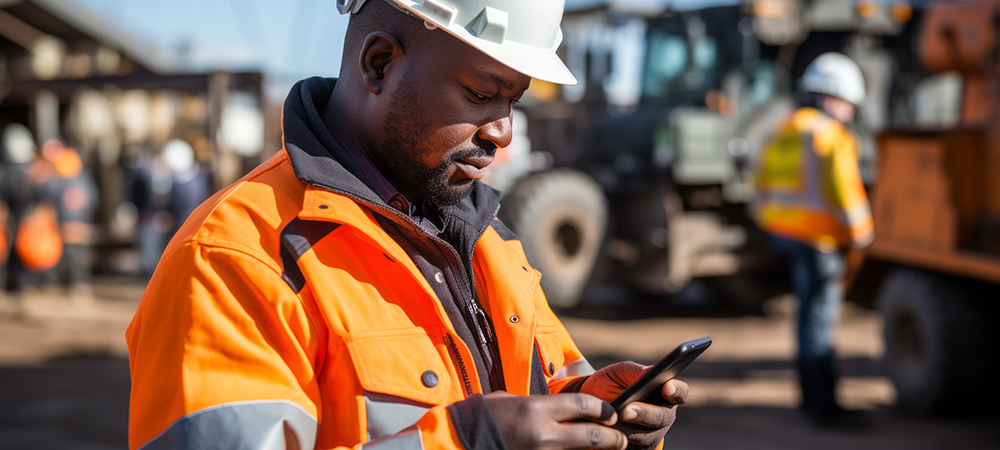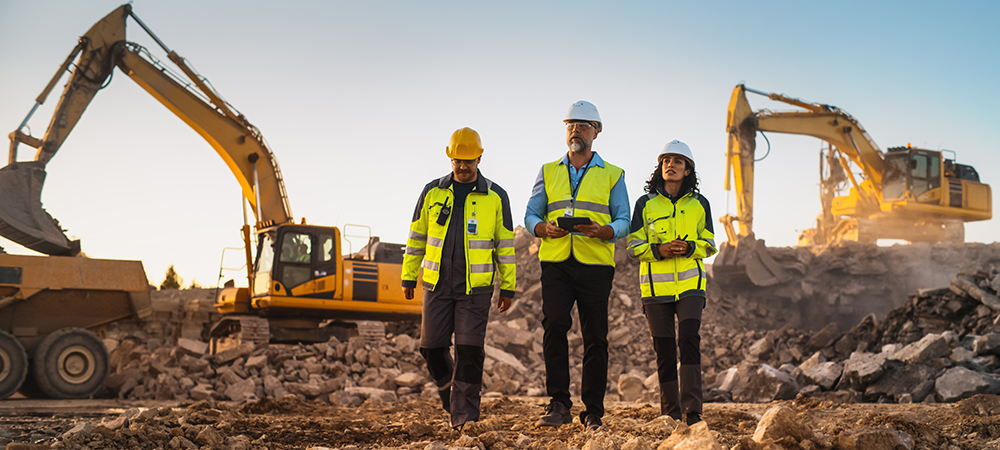Mining companies operate from a head office and multiple remote mining sites creating disparate IT systems, distributed data storage, unmanaged solutions, creating fragmented and disconnected data sets, leading to loss of efficiency explains Hemant Harie at Gabsten Technologies and Iniel Dreyer at Data Management Professionals South Africa.
The mining sector has not escaped the move toward digitalisation, but the nature of the industry means that it faces multiple challenges when it comes to managing, protecting and storing data. One of the central factors for these challenges is the decentralised nature of mining operations, as well as the tendency towards frequent mergers and acquisitions. A lack of consolidated data and centralised data management leaves data vulnerable.
Aside from causing mines to fall foul of the many regulations and compliance requirements, there is also the safety element. Mining organisations need to centralise their data and data management and adopt a holistic strategy as well as an appropriate data management solution to prevent unnecessary loss of life and unlock the power of their data for competitive advantage.
Mining companies typically operate from a head office, often in another country, as well as at multiple mine sites which are in remote areas. This means that head office and the various mines frequently have disparate IT systems, distributed data storage and even completely different and potentially unmanaged solutions. Equipment at mines, such as that which measures temperature or gas in the shafts, is operated and controlled by the mines, while back-office IT systems like payroll are managed by head office.
These two environments do not talk to each other – and the systems between mines themselves do not either – creating a web of disconnected solutions. This means there are no centralised policies or control, no consolidated data governance, no holistic IT management, and many loopholes and vulnerabilities that can be exploited by those with malicious intent.
It also means from a data analytics and business intelligence perspective; mining organisations are unable to effectively leverage the potential of competitive advantage.


With multiple disparate data sources and massive data sprawl it becomes a challenge to implement an effective and manageable cyber security framework. This is complicated by systems and solutions outside of the control of head office, many of which do not interoperate.
Head office will have regular data backups, but because the mines may have limited connectivity due to their location, they may only backup once a day, and backups may not all go to the same place.
In such a scenario, disaster recovery becomes impossible. In the event of ransomware or a cyberattack, data may be compromised, but more importantly, systems that are critical to safety may be taken offline, and this can affect human lives.
Aside from this, mines also have the obligation to protect the large volumes of personal information they store. It is essential to have a single, consolidated data management solution as well as consistent policies and procedures across the organisation.
Not all data is created equal and not all systems are mission critical, but without proper data management it is all but impossible to effectively prioritise and understand how to rebuild in the event of a disaster. The central management of IT assets, alongside data management and security, is crucial, and it needs to incorporate next-generation data protection solutions such as cyber deception, cyber resilience and artificial intelligence.
Having an overarching IT, compliance, risk and data management framework that covers everything in the mine, from business to remote locations, operations and more is a significant challenge, but it is also vital, not only for cybersecurity but for the safety of employees.
This becomes even more important in the event of an acquisition, when new systems and data need to be integrated, understood, and protected. Without it, the risk of continued data disparity and siloes grows and mines are left unable to leverage their data effectively for analytics and competitive advantage
While IT is often the first place where costs are cut, data management and security frameworks are essential for increasing revenue, by enabling greater efficiency and better decision making, in turn driving improved profitability, and for creating a better, safer working environment.


Digital twins and Africa’s mining industry
The mining sector is known for its complex and resource-intensive operations, where the efficient use of resources, safety, and environmental sustainability are of paramount importance. South Africa’s mining industry has started adopting digital twins to optimise mining operations.
Digital twins in the mining sector encompass various aspects of mining operations, offering a comprehensive and dynamic representation of the industry. These digital replicas are created by integrating data from a multitude of sources, including sensors, drones, geological surveys, and historical data.
There are several key components of digital twins in the mining sector.
- Physical asset twin represents the mining equipment, infrastructure, and geological features. It includes 3D models, sensor data, and real-time status information, allowing for a complete view of the physical assets.
- Process twin simulates mining processes and workflows, the process twin enables operators to optimise operations, monitor performance, and make informed decisions. It helps streamline mining activities and reduce inefficiencies.
- Environmental twin monitors and models the impact of mining activities on the environment, allowing for better environmental management and mitigation of adverse effects.
The adoption of digital twins in the mining sector offers a multitude of benefits that significantly impact operational efficiency, safety, and sustainability.
- Digital twins empower mining companies to make data-driven decisions, reducing operational costs and maximising resource utilisation, thereby addressing operational inefficiencies and increasing productivity.
- Safety, a paramount concern in the mining industry, is enhanced through digital twins by simulating emergency scenarios and enabling real-time equipment monitoring, preventing accidents, and facilitating prompt emergency responses.
- Digital twins can contribute to more eco-friendly mining practices by monitoring and minimising environmental impacts, including air and water quality, noise, and land reclamation.
- Digital twins enable real-time equipment monitoring and maintenance, predicting maintenance needs, reducing downtime, and optimising maintenance schedules, resulting in cost savings and improved operational efficiency.
- They also aid in optimising operations by modelling the entire mining process, identifying bottlenecks, streamlining processes, and reducing waste, ultimately enhancing resource utilisation.
- Furthermore, the integration of geological data and models in digital twins helps mining companies better understand the location and quality of resources, aiding in strategic decision-making.
- Digital twins represent a futuristic approach to mining operations, offering a data-driven, real-time view of the industry. Their applications in the mining sector encompass physical assets, processes, and environmental management.
The benefits of digital twins are far-reaching, from improved efficiency and safety to sustainability and optimised operations. For mining companies, understanding, and implementing digital twins is not just a technological choice but a strategic necessity. The impact of digital twins in South African business and IT sectors is also on the rise, making it a significant development in the country’s industrial landscape.



